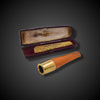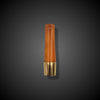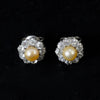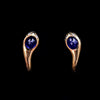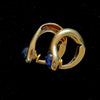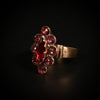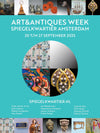The technique of enameling has been around for centuries and probably originated from inlaying small surfaces with pieces of glass. From inlaying to melting in glass is not that big of a step.
The first cloisonné enameled scenes occur in the fifth century BC and were widely used in the Byzantine Empire. With cloisonné, the colors are kept separated by a raised, flat thread. The spaces are filled with different colors of enamel powder. Each color is in its own cell. After enameling, the object is polished to get a nice, smooth enamel layer.
Email peint, which originated in the sixteenth century, is the name of an image applied as a painting in enamel paint. Painted enamel developed to great heights, especially in the eighteenth century. To make it even more technically difficult, the painting could be applied to a guilloché underlay.
Guilloche is enamel applied to an engraved background. Through the translucent enamel, the mechanically engraved line pattern shines through in dark and light tones.
Plique-à-jour, like cloisonné, consists of cells, but here without a background. The light shines through the enamel, like a miniature version of stained glass. The Art Nouveau goldsmiths in particular used the translucent plique-à-jour in their naturalistic jewelry.
En rond bosse enamel is literally the enamel applied all around in various colors on round shapes such as small sculptures or objects in high relief.
Jewelry enamel techniques, a closer look
18.12.2023



